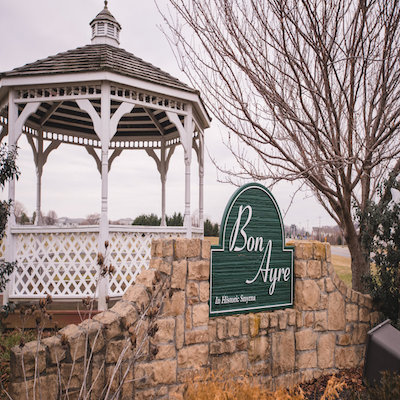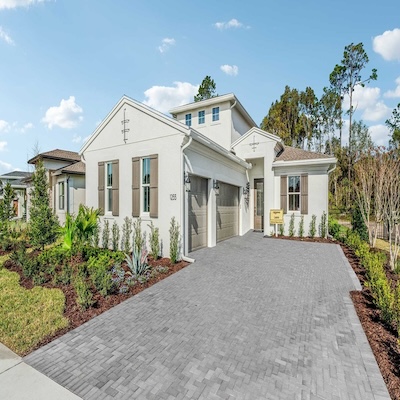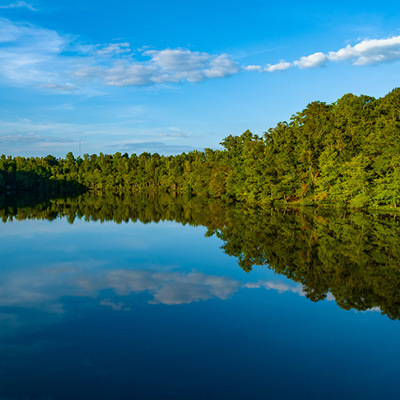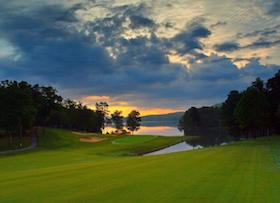Top 10 Trends for Active Adult Communities in 2009
Category: Active adult communities
Note: This is our 2009 article. We updated these active communities trends in 2011 based on interviews with 6 industry experts and comments from our members. Both articles make for interesting reading.
With a fresh avalanche of baby boomers sliding into senior-hood every day, there is a lot of interest in 55+ housing trends. This article provides the Topretirements list of the top 10 active adult community trends for 2009. (We did the same exercise for 2008. There are many similarities on both lists, but also some new ideas).
The ultimate trend for 2009 – and the great unknown – is will the real estate market, after the bashing it took in 2008, come back to some type of equilibrium? We say it’s hard to imagine it getting worse (but we’ve said that before!). Our bet: a modest upturn will start to accelerate in late 2009.
1. Sustainability. Finally there is real momentum, not just talk, in the sustainability movement. A lot of new communities, both 55+ and CCRCs (Continuing Care Retirement Communities), are being built green, even to the point of getting LEEDS certification. Many boomers will pay a bit extra to know that they are in an energy-efficient, environmentally responsible facility. Shea Homes is one of the first builders to embrace this trend as a point of differentiation.
2. Accessibility. The concept of Peter Pan homes (I will never have to grow up, I will never get old) is still alive, but less pervasive. More and more builders are building homes with universal design principles that will allow baby boomers to live in them for decades, not just years. Single floor levels, 1st floor master suites, counters and appliances that anyone can use, and ramps vs. steps are in.
3. Serious energy savings are in. Obviously this is a big part of environmental sustainability, but we are very impressed with the more widespread use of solar panels and hot water heaters, inline hot water heaters, and even geothermal. Energy prices might be down now, but it will be a while before anyone forgets their 2008 utility bills.
4. Programs for baby boomers. There is continued interest in developments that have a wide range of activities and clubs. Shuffleboard is out; Wii, art classes, and baby boomer clubs are in.
5. College and cultural programs. The most attractive developments will have built in links with local colleges and universities – or online classes as well. Some classes will be “on-campus”; convenient transportation will take others to local institutions.
6. Financial Creativity. The 55+ and active adult communities market has been put in a bind with the current housing slowdown. New residents would like to buy, but many won’t have the money until they sell their primary residence. We predict that many facilities will get creative about how to fill this gap with rent-to-own, price guarantees, time shares, and other incentives to increase revenues.
7. Baby boomers refuse to be labeled. 76 million prospects would get any marketer salivating. A lot of boomers will skip the active adult community thing as too contrived, too stereotypical, or too old; they’ll end up staying in their homes, moving to college towns, urban settings, or opting for small towns in nice areas.
8. More concepts from the hospitality industry. The folks who operate hotels and resorts know a lot about how to fill a place with customers and keep them entertained. The smart operators in the active adult industry will emulate these techniques and incorporate talent from this sector into their operations. This will mean an upgrade in amenities and recreational options – look out for even more concierges!
9. Urban and downtown environments will thrive. Developers who are enchanted with the low cost of land in the boondocks may find tough competition from other firms who invest in downtown facilities where residents can walk or take public transportation to shopping, cultural, and community events. Smart developers will take advantage of redevelopment real estate opportunities in small towns and cities of all sizes.
10. Cookie cutter developments will yield to those offering more diversity. Baby boomers hate nothing more than being labeled conventional. So if a development’s homes and residents all look like they belong on the same cookie sheet, the potential audience will be limited. We have a new President who’s popular because he’s “cool” – developments could learn from that – variety and being interesting could get your development elected.
What’s Your Opinion?
Do you agree with this list? Or what did we miss, overlook, or just get plain wrong. Everyone would like to know, so use the “Comments” button below to post your own prognostications. Thanks!
References:
Building Design & Construction by Bradford Perkins
Top 10 Trends in Senior Housing for 2009 (Topeldercares)
Baby Boomers Plan Now to Avoid Outgrowing Their Homes
Top 10 Baby Boomer Retirement Trends for 2008






Comments on "Top 10 Trends for Active Adult Communities in 2009"
Marty Fagala says:
RE: Top Trends in Senior Housing
As I read each point, I commented to myself "Yes", "That's right.", and "Right on! ". Thanks for your informative newsletter, I am sure my husband and I will find our retirement eden.
John Brady says:
Thanks Marty, glad we struck a chord. And good luck finding your Eden - it's out there!
Robert Moore says:
Very thought-provoking. I particularly agree with No. 5. I direct a distance learning program at a community college in Iowa, and the number of non-traditional, older students has seen a steady growth. We are truly developing a cadre of "life-long learners."
Eydie says:
How can oppression of the more active working neighbors by the more elderly
retired neighbors be dealt with? The Actvities, and board meetings in my situation are almost entirely scheduled in such a way to eliminate participation by the younger still working people here. The worst is that
the best community room is shut down at 8 PM on Saturaday. This betrayal of our dues and our needs is justified by the board because church is being held the next morning. Church is held at 10:00. Ridiculously they refuse to hire someone to prepare the room on Sunday morning, and are content to treat us like children instead. They use our HOA fees to fund their programs and restrct our. I want a coopertive community and will continue supporting the elders. This should be more reciprocal.
Are there ways to make HOA structures more fair to all. Are there ways to
stop the oppression? Thanks for any info you can send me. Eydie
Spirit says:
Most of your point, especially 1, 3-4, 6 and 8, provide much food for thought for the Long Range Planning Committee of any established community, especially one that is HUGE (12,000 units) and OLD (40+ years). I hope they will be open to your suggestions.
Ingrid says:
Edye:
That's an interesting point I hadn't thought of before. We're looking at a community that might have the same restrictions, I'll have to find out about that. It's been there for 30 years, doesn't even have a web site or email communications. That's going to change when I get there!
Carolyn says:
Excellent suggestions. I am 47 and in no way am I "Old" or think that I will retire in the "traditional" way. You don't get out of this life a live so I intend to live it to the fullest... going out kicking and screaming for more fun.